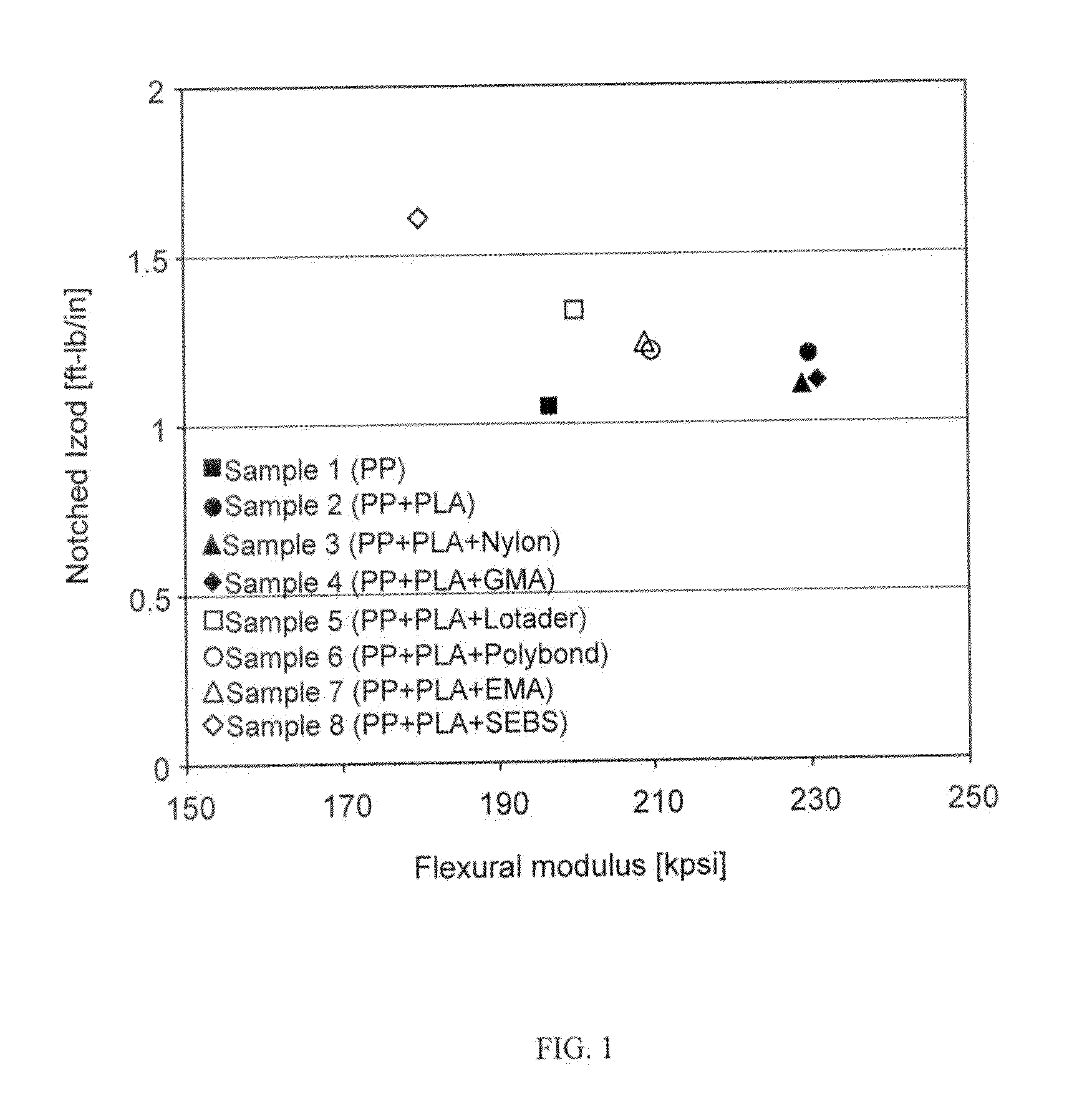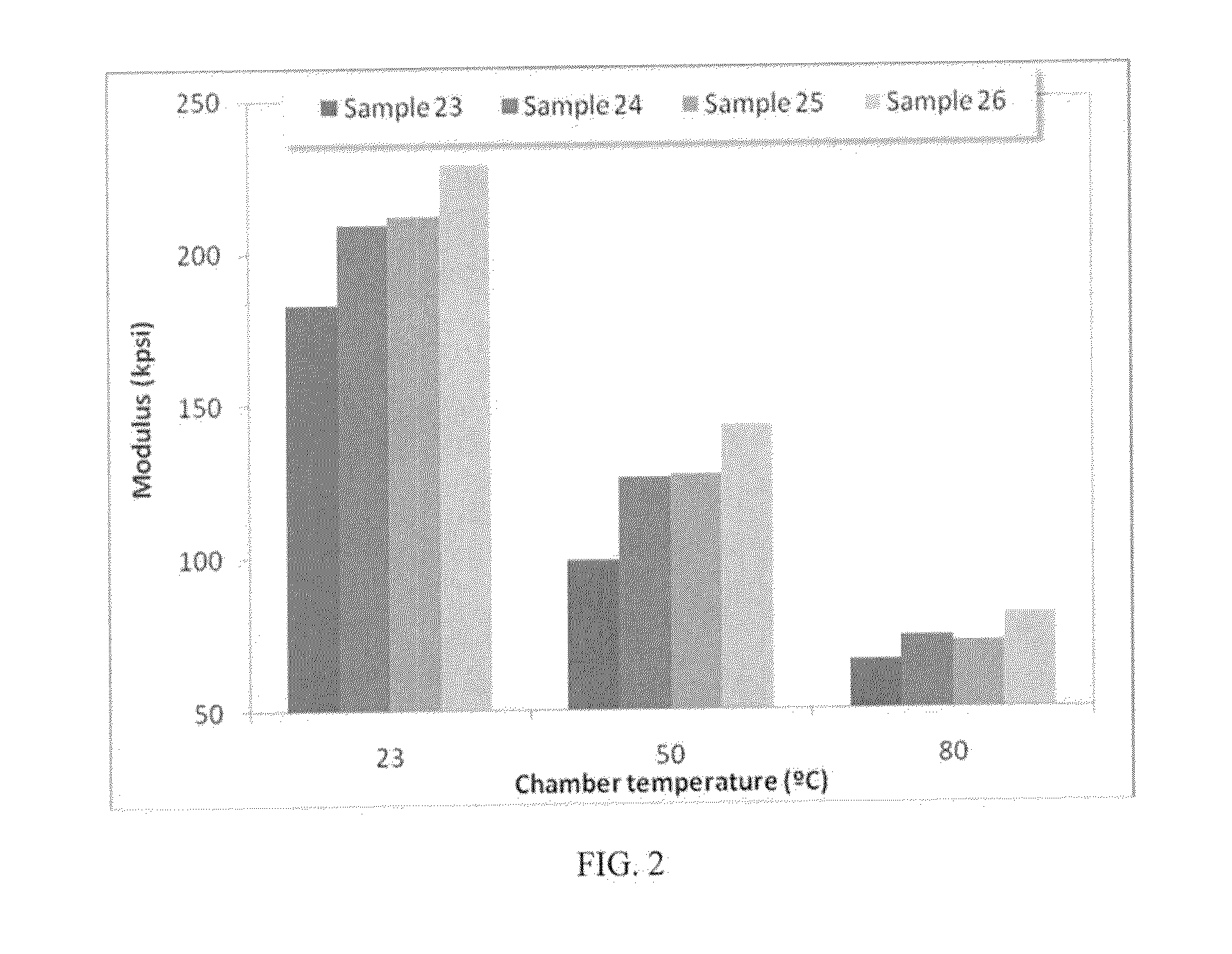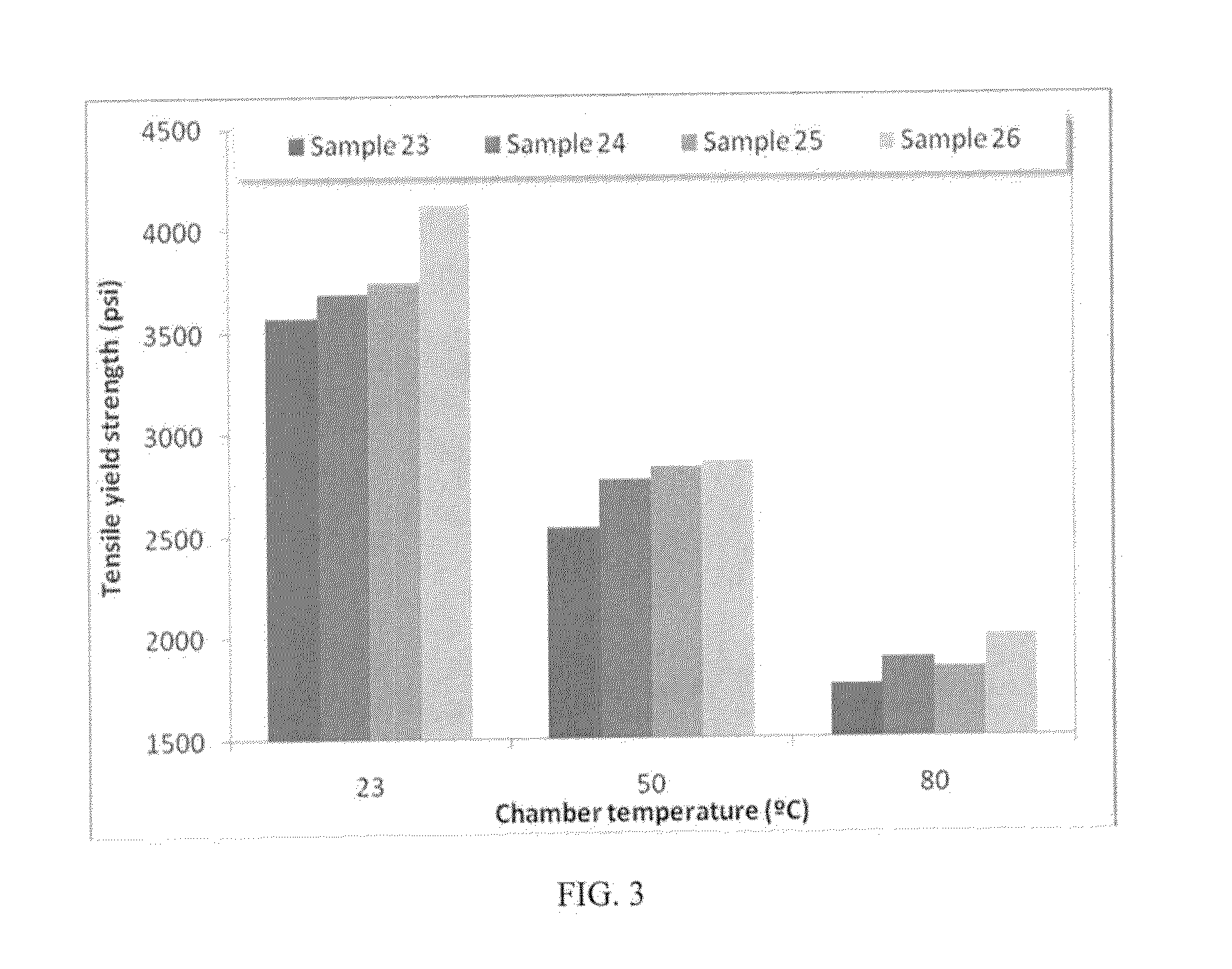Compatibilized polypropylene heterophasic copolymer and polylactic acid blends for injection molding applications
a polypropylene heterophasic and polylactic acid technology, applied in the field of polymer blends, can solve the problems of poor low toughness, and slow deformation of materials, and achieve the effects of low toughness, low mechanical and/or physical properties, and low hardness
- Summary
- Abstract
- Description
- Claims
- Application Information
AI Technical Summary
Benefits of technology
Problems solved by technology
Method used
Image
Examples
example 1
The first example demonstrates the effect of various reactive modifiers on the mechanical properties of polymeric blends comprising polypropylene heterophasic copolymer (PPHC) as the base polymer, PLA and a reactive modifier. For comparison purposes, the first sample (Sample 1) is a polypropylene heterophasic copolymer (“PPHC”) commercially available as neat Total Petrochemicals 4820WZ (“4820WZ”) having 9 wt. % ethylene based on the total weight of the PPHC, referred to herein as the PPHC reference sample. Also for comparison purposes, the second sample (Sample 2) is a blend of PPHC 4820WZ and a polylactic acid polymer commercially available as NatureWorks® PLA Polymer 3251D (“3251D”), referred to herein as PPHC / PLA blend, wherein the PPHC is present in a concentration of about 95 wt. % and the PLA has a concentration of about 5 wt. % based on the total weight of the blend. The remaining samples (i.e., Sample 3 through Sample 8) consist of a blend of 93 wt. % PPHC 4820WZ. 5 wt. % PL...
example 2
In an effort to achieve superior stiffness / impact balance of PP / PLA blends, the second example demonstrates the effect of higher ethylene content polypropylene heterophasic copolymer as the base polymer and higher concentrations of both PLA and reactive modifier (as compared to the samples prepared in the previous first example) on the mechanical and thermophysical properties of polymeric blends comprising PPHC, PLA and a reactive modifier. For comparison purposes, the ninth sample (Sample 9) is a polypropylene heterophasic copolymer (“PPHC”) commercially available as Total Petrochemicals 5571 (“5571”) having 11 wt. % ethylene based on the total weight of the PPHC, referred to herein as the PPHC reference sample. Also for comparison purposes, the tenth sample (Sample 10) is a blend of PPHC 5571 and a polylactic acid polymer commercially available as NatureWorks® PLA Polymer 6202D (“6202D”), referred to herein as the PPHC / PLA blend, wherein the concentrations of PPHC and PLA are abou...
example 3
In an effort to further increase the impact strength of PP / PLA blends without sacrificing stiffness, the third example demonstrates the effect of higher ethylene content polypropylene heterophasic copolymer as the base polymer (as compared to the samples prepared in the previous first and second examples) and several different concentrations of PLA and reactive modifier on the mechanical and thermophysical properties of polymeric blends comprising PPHC, PLA, and highly grafted PP-g-GMA (“HGGMA”) as the reactive modifier. For comparison purposes, the thirteenth sample (Sample 13) is a polypropylene heterophasic copolymer (“PPHC”) commercially available as Total Petrochemicals 7810 (“7810”) having 13.5 wt. % ethylene based on the total weight of the PPHC, referred to herein as the PPHC reference sample. Also for comparison purposes, the fourteenth sample (Sample 14) is a blend of PPHC 7810 and a polylactic acid polymer commercially available as NatureWorks® PLA Polymer 6202D (“6202D”)...
PUM
| Property | Measurement | Unit |
|---|---|---|
| Force | aaaaa | aaaaa |
| Force | aaaaa | aaaaa |
| Force | aaaaa | aaaaa |
Abstract
Description
Claims
Application Information
 Login to View More
Login to View More - R&D
- Intellectual Property
- Life Sciences
- Materials
- Tech Scout
- Unparalleled Data Quality
- Higher Quality Content
- 60% Fewer Hallucinations
Browse by: Latest US Patents, China's latest patents, Technical Efficacy Thesaurus, Application Domain, Technology Topic, Popular Technical Reports.
© 2025 PatSnap. All rights reserved.Legal|Privacy policy|Modern Slavery Act Transparency Statement|Sitemap|About US| Contact US: help@patsnap.com



